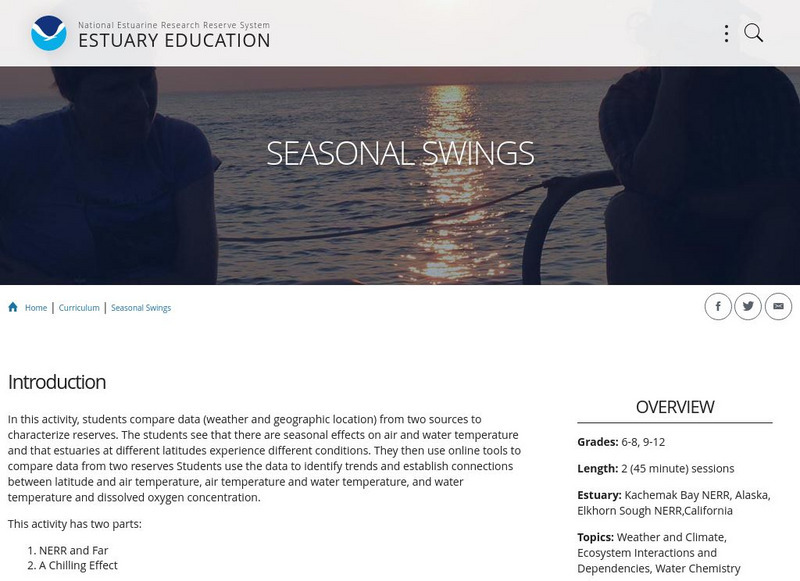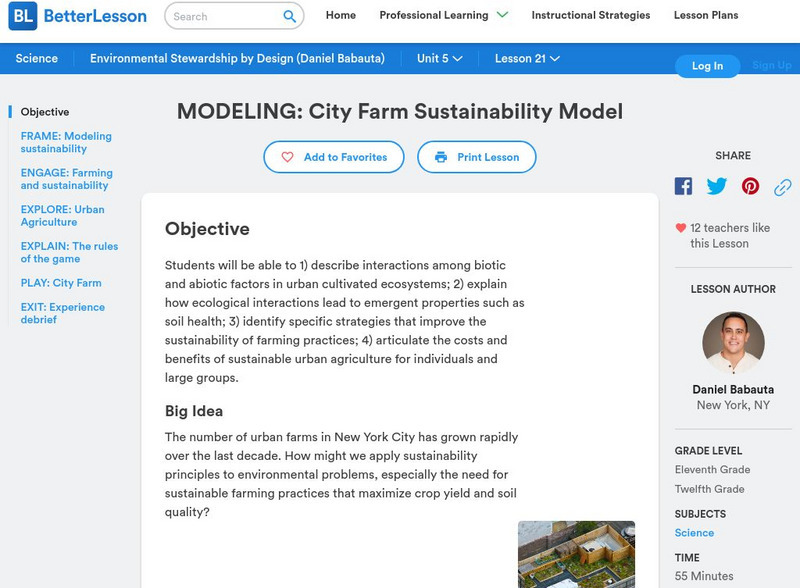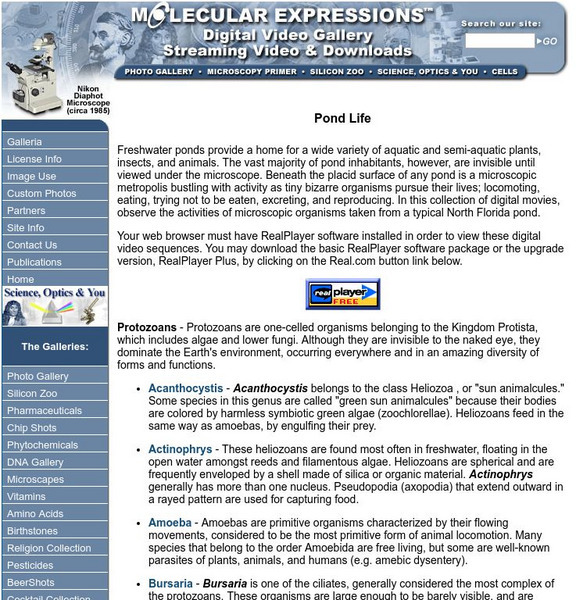National Geographic
National Geographic: Sorting the Gulf Ecosystem
In this activity, students sort images of organisms into categories such as birds, reptiles, plants, invertebrates, etc. Next they examine the provided poster of the Gulf of Mexico ecosystem and categorize organisms they identify. A...
National Geographic
National Geographic: Biodiversity in a Wetland Ecosystem
In this lesson, students learn about the biodiversity of a wetlands ecosystem, then focus on the Barataria Preserve near New Orleans. They then research five species that live there, and follow up by trying to identify the land type in...
American Geosciences Institute
American Geosciences Institute: Earth Science Week: Monitoring Life in the Rocky Intertidal Ecosystem
This activity will allow students to learn the sampling techniques used in the field by citizen scientists who participate in LiMPETS, five national marine sanctuaries along the West Coast.
Utah STEM Foundation
Utah Stem Action Center: Great Salt Lake Ecosystem
This lesson plan provides an eight-day flow of educational activities in which learners use the Great Salt Lake ecosystem to explore food webs and how changes in living and nonliving factors affect different populations.
University of Texas at Austin
Univ. Of Texas: Texas Memorial Museum: Creating a Freshwater Ecosystem [Pdf]
An activity where students create a mobile that represent a freshwater ecosystem that appears in nature. Requires Adobe Reader [PDF].
Other
Science and Kids Activities: Pollination and Seed Dispersal
Second graders learn how plants depend on animals to disperse their seeds. Students will learn about ways that animals can disperse seeds. They will design their own model and compare it to the real action of plants and animals. In the...
National Geographic
National Geographic: Ocean Abiotic Factors
After looking at examples of biotic and abiotic factors in ecosystems, students focus on abiotic factors in marine ecosystems, the physical processes that are involved, and the impact human activities can have on these. Includes handouts...
NOAA
Noaa: Estuaries 101 Curriculum: Estuary Food Pyramid
Students learn about the feeding relationships in an estuary ecosystem with this interactive energy pyramid activity. A second activity involves research and a video clip to elaborate the learning.
Nature Conservancy
The Nature Conservancy: From America's Rainforest to America's Desert
On this virtual field trip, teachers will help their students travel to the lush, rain-soaked splendor of the Olympic Peninsula and explore the urban watershed of Seattle. Next, they will head to Arizona's dry, desert landscape and take...
PBS
Pbs: Plum Landing
Invite students to visit ecosystems around the world with this collection. This collection includes activities for the classroom, after school, and families. Also included is games.
PBS
Pbs: M, M, M (Maps, Maps, Maps)
This is an online activity on Topographic maps with stated objectives, an activity, background information, evaluation, and resources. This site has information on where you can adjust the activity for elementary or secondary age levels.
NOAA
Noaa: Estuaries 101 Curriculum: Seasonal Swings
Students use an interactive map to compare environmental conditions in different estuaries around the National Estuarine Research Reserve System. A second activity allows students to use the Graphing Tool to find, select, and graph data...
Better Lesson
Better Lesson: What Kind of Animals Live on Farms?
A lesson on sustainability of urban farms in particular in New York City. Learners learn how to apply sustainability principles to environmental problems. Students will look at the need for sustainable farming practices that maximize...
PBS
Pbs Learning Media: Nature Cat: Story Exploration Packet
As you watch Nature Cat, use these tools to guide discussions and learning activities. Includes printables on story elements, alternate endings, vocabulary words, character traits, an episode map, and a Venn diagram.
Other
Biology at Shaw High School: What Do Living Things Need to Survive?
Discusses the interrelatedness of all living things and of ecosystems and biomes, and what organisms need to survive and to maximize the carrying capacity of an ecosystem. This explanation is followed by a series of activities including...
Government of Alberta
Alberta Environment: Focus on Land Reclamation [Pdf]
When land has been damaged, efforts are often made to bring it back to health, a process called land reclamation. Activities that damage land, and government regulations in Alberta that allow it to be revived are explained.
Science Struck
Science Struck: A Helpful Guide to Understand the Photic Zone
The photic zone is the upper layer of the ocean where sunlight can penetrate and support photosynthesis. This article explains the characteristics of this zone, the food chain that exists there, the adaptations of the plants and animals,...
University of Illinois
University of Illinois: Illinois State Water Survey: Nitrogen Cycle: Human Impact on the Nitrogen Cycle
An overview of the impact of human activities on the environment and how those actions effect the nitrogen cycle.
Alabama Learning Exchange
Alex: At Home in a Biome
This lesson allows students to study and learn the names and characteristics of Earth's six major biomes. The biomes are introduced with a slideshow presentation. A paper-folding poster activity gives students the opportunity to...
Florida State University
Florida State University: Pond Life
Explore the microscopic organisms that live in the freshwater ponds with this video collection. These video clips feature unicellular organisms, from under the microscope, showing off their daily activities. Collection includes videos of...
Other
Itc: Ecological Evaluation for Environmental Impact Assessment [Pdf]
Find out how environmental degradation and the depletion of natural resources induced by human activities have attracted steadily growing concerns in the last decades.
National Geographic
National Geographic: Ocean Abiotic Factors
Students define and provide examples of abiotic and biotic factors of different ecosystems. Then they investigate the importance of abiotic factors and physical processes within ocean ecosystems.
National Geographic
National Geographic: Marine Food Webs
For this lesson, students learn about marine food webs and pyramids, and how energy flows through a marine ecosystem. They then research a marine organism and its role in a marine food web. The class pools their information to create a...
TeachEngineering
Teach Engineering: Population Density: How Much Space Do You Have?
Students learn about population density within environments and ecosystems. They determine the density of a population and think about why population density and distribution information is useful to engineers for city planning and...















